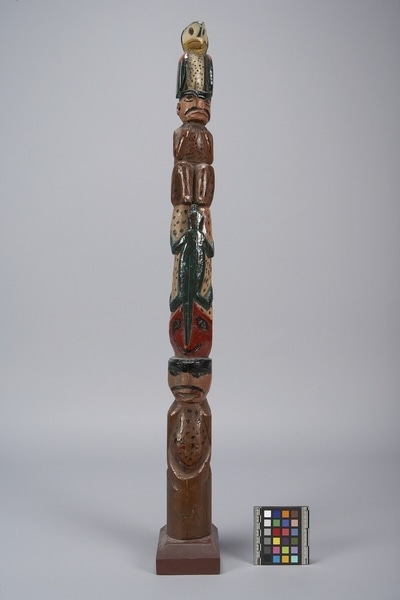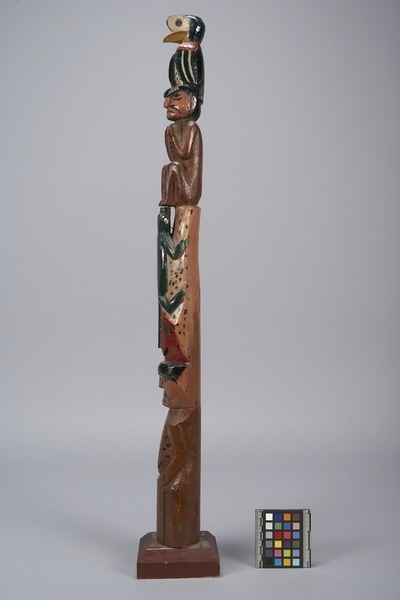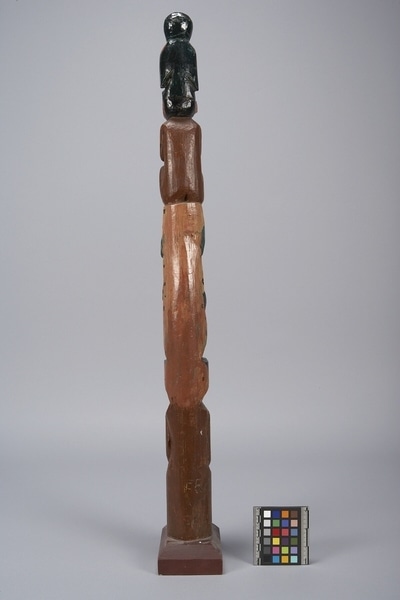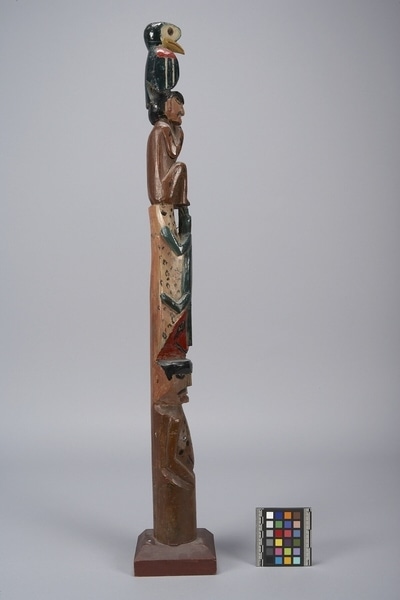Model Totem Pole Item Number: A3514 from the MOA: University of British Columbia




Description
Model totem pole with five figures. The figures represented, from the base upwards, are a man, the face of a mythical being, a lizard, a seated man, and an eagle. The eagle's face and breast are white, his body and wings are green. The wings are also accented with red. The seated man is brown with details added in black. The lizard is green with red dots on a piece of black spotted wood. The mythical being is red with facial details in black. The man at the base of the totem pole is brown with details added in black. The base is a thick tiered square, painted brown and attached to the totem pole.
History Of Use
Traditionally, Coast Salish sculptures took the form of large-scale houseposts and boards, which were decorated with realistic looking animal, human and supernatural figures. Totem poles, originally only carved by their northern neighbours, became more popular in the early 20th century as tourist art. Many scholars feel that traditional styles of Coast Salish "art" were overlooked because it expressed private, non-secular experiences of the makers and they were reticent to discuss it or sell it to individuals outside of their communities. Miniature carved objects, such as totem poles and canoes, were popular forms of tourist art in the 20th century and are found in many museum collections.
Cultural Context
contemporary art; tourist art; woodworking
Item History
- Made in British Columbia, Canada during 1900
- Owned by Florence Fyfe-Smith before 1951
- Received from Florence Fyfe-Smith (Donor) during 1951
What
- Name
- Model Totem Pole
- Identification Number
- A3514
- Type of Item
- totem pole
- Material
- cedar wood and oil paint
- Manufacturing Technique
- painted and carved
- Overall
- height 77.5 cm, width 9.0 cm, depth 11.5 cm
Who
- Culture
- Coast Salish
- Previous Owner
- Florence Fyfe-Smith
- Received from
- Florence Fyfe-Smith (Donor)
Where
- Holding Institution
- MOA: University of British Columbia
- Made in
- British Columbia, Canada
When
- Creation Date
- during 1900
- Ownership Date
- before 1951
- Acquisition Date
- during 1951
Other
- Condition
- good
- Current Location
- Case 6